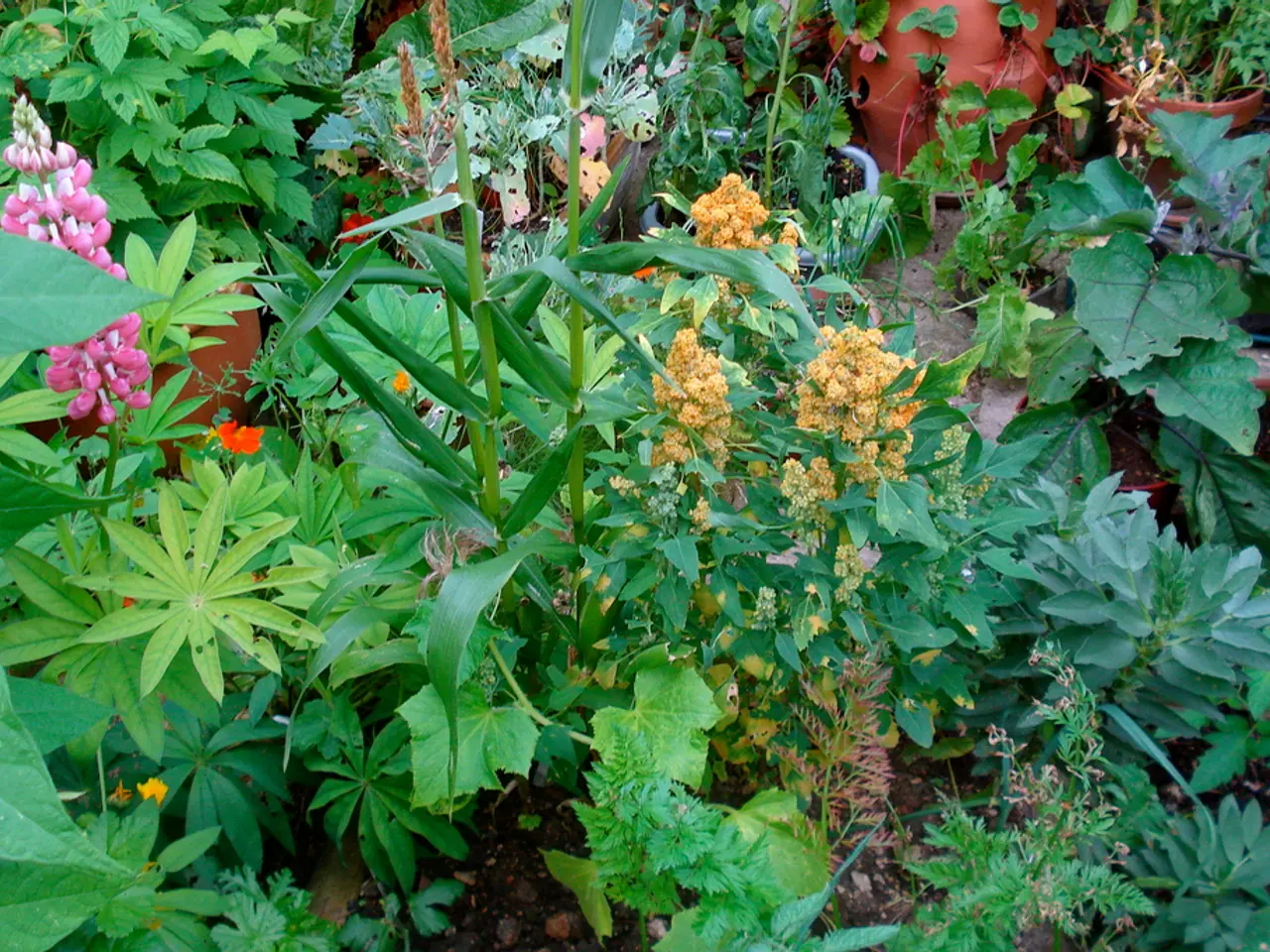Creating an eye-catching and eco-friendly garden: Learn design techniques for attractive sustainable gardens
In the heart of a local community, a garden designed by Studio Toop showcases the creatively invigorating power of limitations. This garden, a testament to sustainable design, integrates repurposed materials, biodiverse green roofs, and climate-tolerant trees to create resilient, eco-friendly spaces.
Repurposed Materials: Unique Charm and Functionality
Transforming discarded items into garden planters, benches, or decorative features, Studio Toop demonstrates the endless possibilities of natural materials. Old wooden pallets, broken furniture, vintage tin cans, and crates find new life in the garden, adding unique charm and functionality.
Using sustainable construction materials like reclaimed bricks, gravel, and permeable pavers for patios, paths, or walls can help reduce stormwater runoff and environmental impact. The private garden features low walls made from repurposed concrete terrace pavers, offering wide perching choices and grounding the design in materials that feel right for the setting.
Biodiverse Roofs: Enriching Ecosystems
Incorporating green roofs planted with a variety of native plants enhances biodiversity, provides insulation, and supports wildlife. Combining them with drought-tolerant native ground covers and efficient water capture methods improves environmental benefits and water efficiency.
Climate-Tolerant Trees: Shade and Resilience
Selecting trees adapted to local climatic conditions provides shade and climate resilience. In dry or hot climates, species like desert willow or medium-sized drought-tolerant trees cool the landscape and shelter understory plants, reducing water demands.
Additional Sustainable Practices
Incorporating xeriscaping elements such as organic mulches and ground covers that reduce evaporation and soil temperature, maintaining soil health by allowing leaves to decompose naturally, and minimizing pruning by allowing plants to reach natural sizes complement the garden's eco-friendly features.
Making active choices on the features we create in our gardens, the materials we use, and the methods we employ to reduce energy use can create beautiful, functional spaces. Natural materials offer endless possibilities for creating sculptural spaces that support a rich ecosystem.
Carrie Preston, founder of Studio Toop, combines inventive use of materials, meticulous attention to detail, and rich, resilient planting. Her approach to design is showcased on her Instagram account (@studiotoop). Innovations in low-carbon construction materials, such as cement-free concrete, can significantly reduce emissions. High-quality natural materials, such as stone and hardwood, can be more durable and have longer lifespans, despite being more expensive to buy.
Repurposing waste materials as mulches and habitat piles can create a new, plant-led landscape and prevent waste from entering landfill. The repurposed concrete pavers have been stacked to form walls at a height of 450mm, ideal for seating. Screw piles or ground screws are a low-impact alternative to concrete foundations, minimizing soil disturbance while supporting garden structures. A decent foundation and specialist glue fixing between the stacks give stability to the walls. Alternating rows of the stacked pavers have a stylish shadow gap.
Supporting ecosystems at a time when they need it the most is a benefit of making sustainable choices in garden design. Minimally processed materials require less energy to produce compared to materials with high-energy inputs or processes. The garden design by Studio Toop uses repurposed materials creatively, demonstrating that sustainable design can be both beautiful and functional.
- Studio Toop creatively demonstrates the boundless potential of natural materials by transforming discarded items into garden planters, benches, or decorative features, adding unique charm and functionality to the garden.
- Incorporating green roofs planted with a variety of native plants enriches ecosystems, provides insulation, and supports wildlife, while combining them with drought-tolerant native ground covers and efficient water capture methods improves environmental benefits and water efficiency.
- The use of sustainable construction materials like reclaimed bricks, gravel, and permeable pavers for patios, paths, or walls can help reduce stormwater runoff and environmental impact.
- Selecting trees adapted to local climatic conditions provides shade and climate resilience, with species like desert willow or medium-sized drought-tolerant trees cooling the landscape and sheltering understory plants, reducing water demands.
- By incorporating xeriscaping elements such as organic mulches and ground covers that reduce evaporation and soil temperature, maintaining soil health by allowing leaves to decompose naturally, and minimizing pruning by allowing plants to reach natural sizes, the garden design complements its eco-friendly features and supports sustainable living, becoming a beautiful, functional space that integrates earth-friendly practices into home-and-garden lifestyle.




